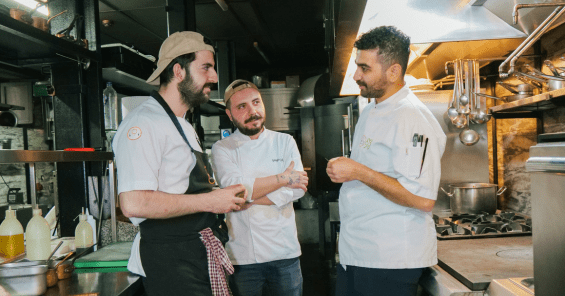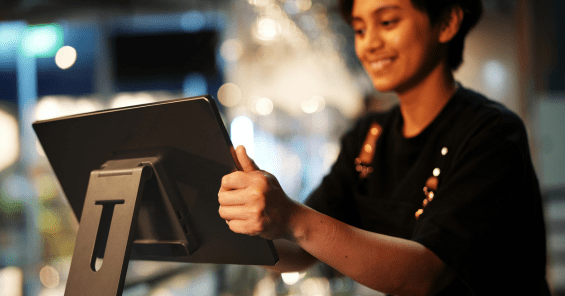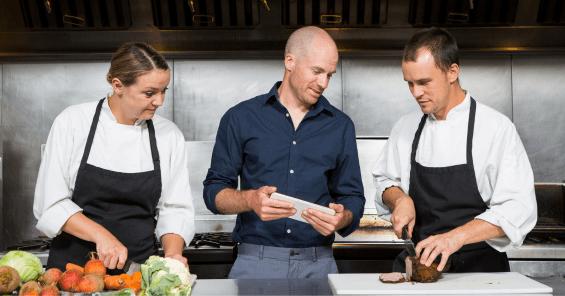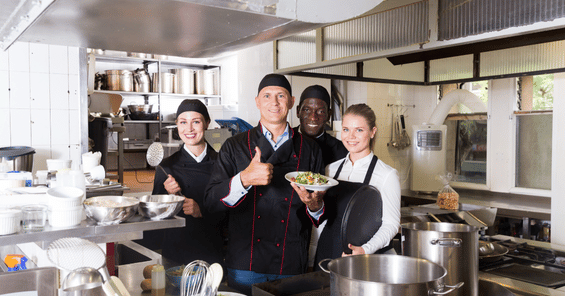

6 Laws of a Resilient Restaurant
Amidst all the uncertainty, we’re inspired by the stories of resilience -- stories of restaurateurs who creatively explored new revenue streams, quickly adopted delivery-first operational models, and selflessly fed the less fortunate in their local communities. We interviewed dozens of restaurant experts and compiled breakthrough strategies to help restaurants not only stay afloat, but thrive when met with a wave of uncertainty. What is a resilient restaurant? A resilient restaurant quickly adapts to change and repeatedly overcomes any major crisis. Let’s dive into how the six most effective ways to…
Amidst all the uncertainty, we’re inspired by the stories of resilience -- stories of restaurateurs who creatively explored new revenue streams, quickly adopted delivery-first operational models, and selflessly fed the less fortunate in their local communities. We interviewed dozens of restaurant experts and compiled breakthrough strategies to help restaurants not only stay afloat, but thrive when met with a wave of uncertainty. What is a resilient restaurant? A resilient restaurant quickly adapts to change and repeatedly overcomes any major crisis. Let’s dive into how the six most effective ways to build a resilient restaurant:
Six Laws of a Resilient Restaurant
Learn how to optimize every facet of your business, from menu optimization to tech solutions and gain actionable insights on saving money, driving engagement, and ensuring safety in your restaurant
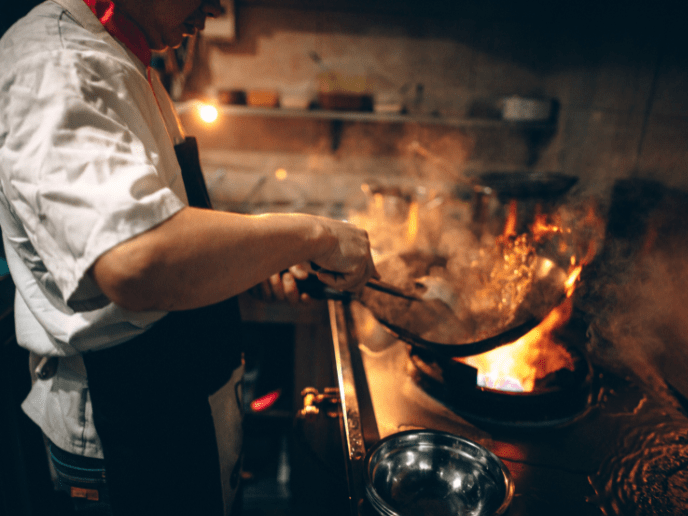
1. Small savings add up to a big payoff
You’ve probably fully fleshed out your business plan when you first opened shop. Now with the challenges of COVID-19 still ongoing, it’s time to reevaluate that plan to see how you can thrive in what is now a loss-avoidance business. Let’s take a look at four out of seven ways you can save some money:
Optimize your menu items
In a study conducted by Rewards Network, 28% of restaurant owners reduced their menus to meet the demand of delivery-only orders in 2020.
By adjusting your menu, you will:
- Order fewer ingredients from supplier
- Improve meal preparation and cooking time
- Minimize indoor dining turnaround times
- Improve drive-through speed and sales
- Decrease food costs and achieve economies of scale
Negotiate with your suppliers
Suppliers have worked more closely with buyers to negotiate prices, communicate price changes, and provide resources to help them through the pandemic. Pick up the phone and ask your supplier to:
- Price match a competitor
- Adjust your payment schedule
- Provide a discount
- Send bulk orders into separate shipments
- Reduce minimum order quantity
- Ask for substitutions for a cheaper product that is similar in quality
Reduce portions
Use cookbooks and printed charts to train your staff to weigh and measure their ingredients to ensure consistent portion sizes. This will keep your customers happy, minimize waste, and provide a more accurate food cost calculation. Use a tool like MarketMan to create a digital cookbook that can be updated regularly and be displayed on a tablet in the kitchen.
Calculate substitutions
Ensure the cost of your substitutions is equal or of less value to keep your dishes as profitable as possible. Price additional side dishes accordingly and enforce these changes with your kitchen staff.
Ready to adjust your menu? Download the 6 Laws of a Resilient Restaurant ebook to get full access to a menu audit graph and the rest of the cost saving strategies.
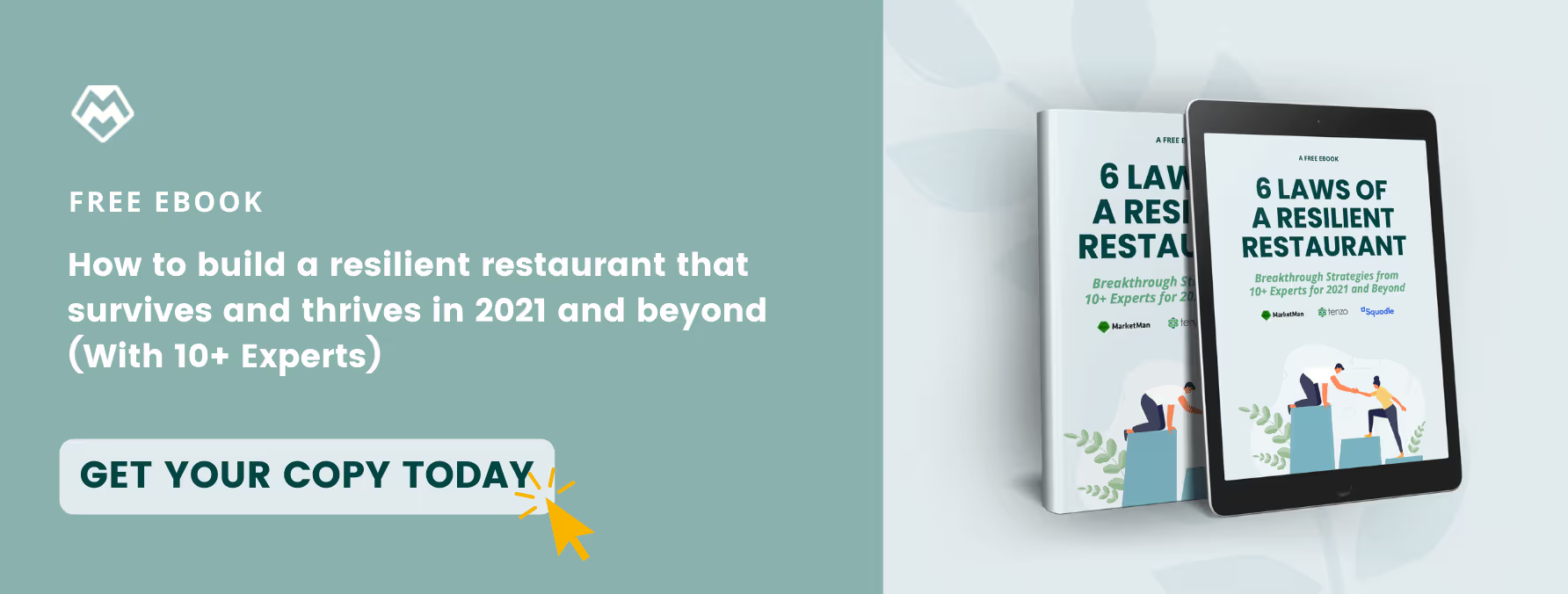
2. Successful marketing begins with your community
Customer relationships are crucial to a restaurant’s ability to receive and retain loyal, returning customers. Increasing customer retention by just 5% boosts profits up to 95%. It all begins with telling your story.
Craft a compelling story
To craft your story, break the process down into three sections: the moment of inspiration, the journey, and the vision.
Don’t be afraid to get personal; vulnerability with appropriate boundaries helps businesses gain trust from others, identify areas of growth, and improve overall operations. Now dig up some old photos to bring your story to life!

Start local
Restaurants are crucial to a neighborhood’s cultural identity. Your involvement in your community matters. Local-level involvement offers a unique opportunity to create genuine relationships with your customers.
Get started by joining Facebook and LinkedIn groups that promote local events, restaurants, and businesses. Think of ways to extend certain discounts, announce a limited-edition menu offering, or simply share your unique story.
Don’t be afraid to contact your local chamber of commerce that can help you promote your business through their website and newsletters.
How to generate local buzz
- Invite influencers, editors, and bloggers for a free meal to taste new or revised menu items. While they visit, give them a tour of the restaurant, tell them your story in-depth, and invite them to check out the back of house operations to meet the employees.
- Invite bloggers and influencers for an exclusive taste testing event not yet available to the public.
- Host a cooking class highlighting a popular menu item.
- If your restaurant has digital ordering capabilities, give influencers a promo code for special discounts.
- Start a community fridge or get your community involved in a local charity drive.
3. Loyalty is best achieved through consistent engagement
In a world run by restaurant search engines, food influencers, and paid advertising, the opportunities to get in front of new customers is expanding. Your interactions with your new and potential customers can determine whether or not you can get more dishes out your door.
The viral marketing trap
The internet has cultivated a dangerous obsession with overnight success. Focusing your limited resources on going viral is a dangerous trap to fall into. Virality is impossible to predict and does not guarantee any long-term success.
Instead, think of ways to genuinely portray your brand by fostering consistent relationships with customers over time. While a short viral spike can help you sell out for a few weeks, it pays off to be a household name rather than the next neighborhood fad.
Pull vs push marketing
There are two distinctive types of marketing for restaurant operators: push marketing and pull marketing. For most restaurants, pull marketing is the best long-term strategy to cultivate lifelong customers.
Push marketing attracts new customers through paid advertising. Think of billboards, Instagram ads, and TV spots.
Pull marketing attracts new customers by providing your audience value before making a sale. This is achieved through entertaining content on social media, earned mentions in the press, community involvement, word-of-mouth referrals, and exceptional customer service. A pull marketing strategy consistently engages your potential customers throughout their customer lifecycle and keeps them returning.
Optimize your customer lifecycle
The customer lifecycle describes the different stages a customer goes through when interacting with your business and how you can maintain a relationship once they walk out your door. Get the full step-by-step guide on how you can optimize every step of the customer lifecycle here.

4. Making tough calls will save your business
Running your restaurant in the middle of the pandemic is one of the biggest leadership challenges you’ll ever face. You’ve had to make some tough calls - layoffs, budget cuts, and maybe shuttering your business for a while.
You may have also created familial bonds that make these decisions even more difficult. The most important thing is to focus on what is going to make your business survive.
There are three key benefits to empathetic leadership:
- Find new areas to improve: No one faces your operational challenges on a daily basis as your employees do. Keeping an open-door policy encourages your employees to come up with novel ways to improve efficiency, keeping your employees engaged and motivated to be more effective at their jobs.
- Reduce mistakes and waste: Mistakes happen, but they prove to be more costly when they’re not reported. A safe space that operates on trust reduces nervousness and any motivation to hide potentially harmful mistakes.
- Reduce turnover: By supporting your employees and strengthening your personal relationship with them, you will improve job satisfaction, retain your best employees, and attract new talent. Watch Gabriel Stulman’s presentation on lessons from restaurants on engaging with your team.
How to Lead with Empathy
When faced with the seemingly insurmountable challenges of running a restaurant during a pandemic, leading by example is more difficult than ever. However, this also opens an opportunity for you to make an impact and define the culture in which you operate. Here are a few ways you can get started:
Invest in self-care
Your restaurant simply cannot function without you being at your very best. You and your staff live chaotic lives but even five to ten minutes a day of self care is important. You are the heart of your business, and you need to invest in ways you can operate at the highest level. Whether it’s meditation, therapy, exercise, journaling, or deep breathing, invest in self-care to ensure you are setting aside time to reflect, build, and distress.
Tell your story
Strong leadership doesn’t mean you have to navigate rough waters alone. Everyone has a unique story; share your business challenges with your staff and collaborate with your team to bring new solutions to the table.
Stay organized
The clearer your guidelines, expectations, and procedures are, the fewer opportunities for miscommunication and ill-feeling there will be. Put processes in place that show your employees that hard work and tenure will pay off.

5. Visible safety measures keep your staff safe and your customers returning
Food and restaurant safety will continue to be a deciding factor for diners beyond the pandemic. In order to regain diners' confidence to return to normalcy, restaurateurs must demonstrate how they are protecting their own employees and customers.
Beyond adhering to safety protocols, it’s integral to tell your customers how you are doing them. Use signage, post on social media, update the language on your website, and outline your safety protocols on Yelp. This will turn your added safety measures into a competitive advantage to win new customers and attract the very best job candidates.
6. Build a resilient restaurant with a strong tech foundation
COVID-19 has accelerated the adoption of restaurant technology and restaurant operators are quickly realizing that it’s not as scary as it seems. This is because restaurants are a treasure trove of data, and restaurant operators now have full access to key data points like sales, purchases, labor costs, inventory, reviews and more.
How to evaluate the right restaurant technology for you
The first step is to evaluate where you are spending most of your time and resources. What tasks can you automate? What data do you wish you had available? What are the most common complaints your staff members bring up?
Every business has its own unique set of challenges. Whether you’re struggling with inventory, employee scheduling, or even food safety, it’s important to find a solution that has the capabilities to take these challenges off your plate.
The Power of Integrations
The one-size-fits-all solution is a myth. Each restaurant tech platform has its strengths and its weaknesses, which is why it’s integral to build an ecosystem that supports your greatest challenges.
Integrations allow your software to speak to each other with one singular data source. Non-integrated systems create a bigger headache where you’ll waste time comparing two different sets of data.
Download the 6 Laws of a Resilient Restaurant ebook and get access to how you can use data with the right tech solutions, a complete list of available restaurant technology solutions, and complete technology audit checklist. To see how you can transform the way you do business with technology today, check out MarketMan to get started.
Automate your inventory management, control food costs, and streamline back-of-house processes effortlessly with MarketMan's restaurant software. MarketMan enables restaurateurs to eliminate manual tasks, reduce waste, and drive success through strategic insights. Experience a new level of restaurant efficiency. Schedule a demo now to learn how MarketMan can revolutionize your operations!

Author
Contributors
If you have any questions or need help, feel free to reach out
Don't miss out on maximizing your restaurant's profits! Calculate your ROI with MarketMan
Join over 18,000 restaurants and get the hottest restaurant tips delivered to your inbox
You may also be interested in
Ready to get started?
Talk to a restaurant expert today and learn how MarketMan can help your business



